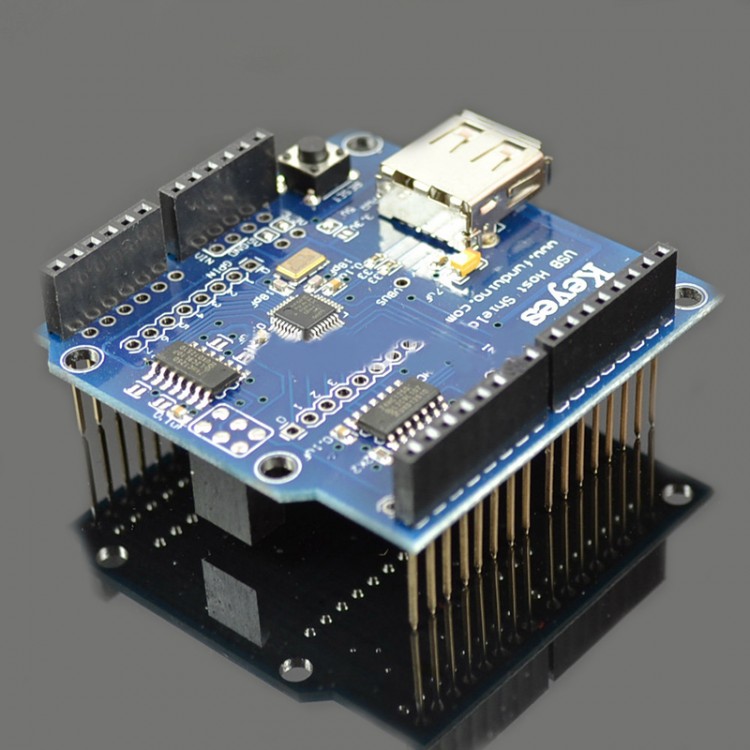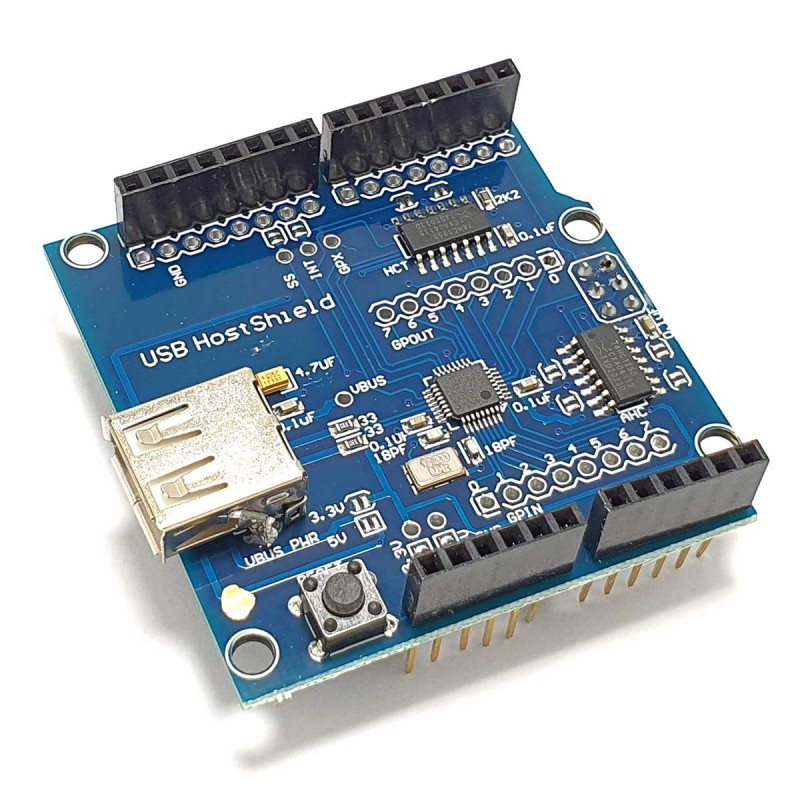

What could be causing this problem, or is my problem somewhere else in the circuit?ġ) too much capacitance (my 20 pF crystal oscillator + 2x39 pF capacitors vs. The Arduino USB Host Shield is based on the MAX3421E, which is a USB peripheral/host controller containing the digital logic and analog circuitry necessary to implement a full-speed USB peripheral or a full-/low-speed host compliant to USB specification rev 2.0. I've looked at the USB D+/- signals from both boards with an oscilloscope (see attached image link) and they're all but identical except for the tail end of the waveforms. A arduino with an USB-Host (Mega will not work) or an shield which provides the USB-Host A Bluetooth dongle On your Arduino you will have to run the PS3BT You have to know the MAC adress of your BT-dongle. INTRODUCTION The Arduino USB Host Shield allows you to connect a USB device to your Arduino board. You may be able to rescue this part by soldering the resistors directly between the USB breakout and the MAX3421E breakout - bypassing the breadboard entirely.
#Arduino usb host shield and stacking full size
I purchased a full size host shield for my Arduino MEGA 2560 to gather control data for debugging, and both it and the dongle work perfectly with the board_qc sketch. USB host shield: in that link it says that the USB shield is using the SPI pins (of course) and pin D9, D8 and D7. Running a USB signal through a breadboard, a pair of loose hookup wires, and a breadboard again is likely to degrade the signal to the point that it wont work.
#Arduino usb host shield and stacking pro
The "board_qc" sketch passes every test when I run it on my homemade shield (connected to an Arduino Pro Mini 3.3V 8MHz) but then fails with "USB State Machine Reached Error State" when I plug in a Pluggable BLE dongle. To start, I'm simply trying to recreate the Mini Host Shield, but I'm stuck when it comes to getting the USB data transfer to work.

I'm trying to build the USB Host Shield (based on the MAX3421E chip) from scratch since I need to be able to power the Arduino using OTG mode, a premade board will not work for my application.


 0 kommentar(er)
0 kommentar(er)
